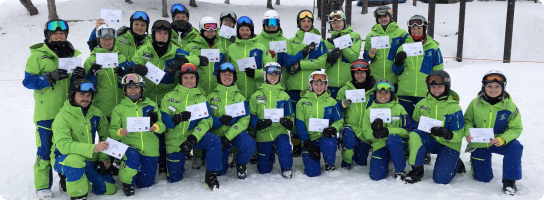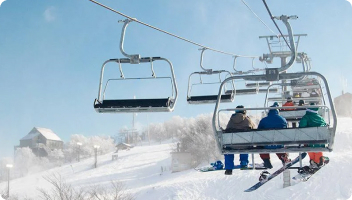Work A Ski Season in the USA
Discover information on working a ski season in the USA and browse jobs.
View jobs
The US is home to some of the world’s best ski resorts. On the western side of the country, through Colorado, Idaho, Wyoming and Utah, run the Rockies mountain range. This is the best skiing and snowboarding in the country and has some of the best powder in the world.
The Sierra Nevada mountain range runs through California where the snow can dump down in even greater quantities, albeit with slightly wetter, heavier snow.
There are also mountains that run on the east coast of the country and through the mid-west, while the largest concentration of resorts is to be found in the north east around Vermont and New York State.
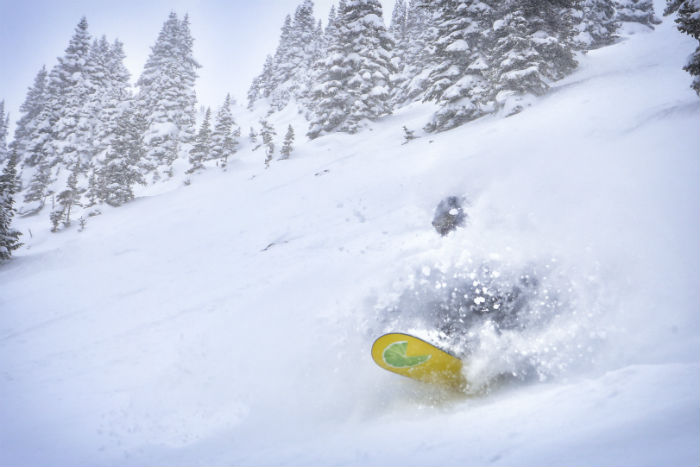
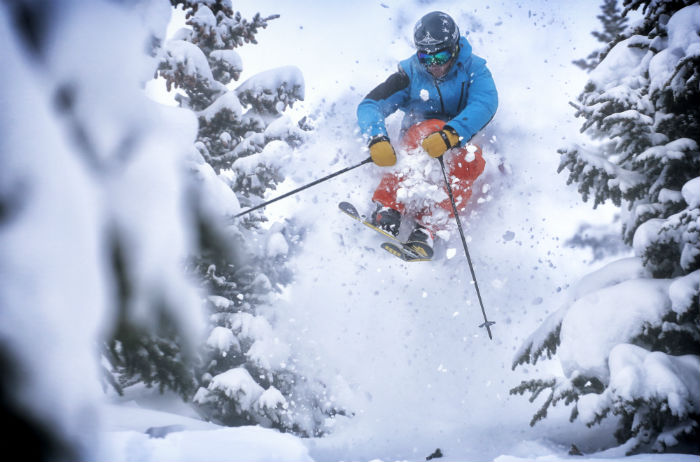
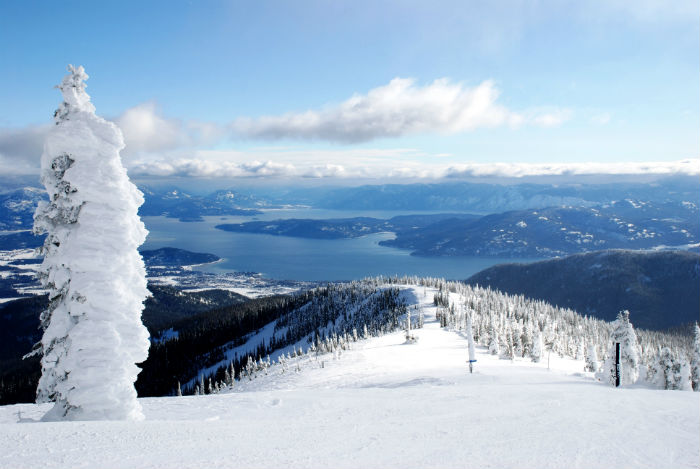
Terrain and Snow in the USA
The Rockies
The Rocky Mountains run through New Mexico, Colorado, Utah, Wyoming, Idaho and Montana and are home to the best terrain in the USA. The peaks rise up to over 13,000ft / 4,000m (Mt Elbert is the highest point at 14,440 ft / 4,401 m) and there are some incredible, world famous mountains to ride. These include Vail, Aspen, Telluride, Snowbird, Jackson Hole, Sun Valley and Big Sky.
The Rocky Mountains also have the best snow and weather in the US. Utah is often cited as having the lightest, fluffiest powder in the world. You can expect up to 10 genuine powder days throughout the season where it has dumped down the night before, and a number of smaller powder days. The powder is incredible and working a season gives you the chance to ride every powder day for the season.
The weather in the Rockies is generally warmer compared to that of the Canadian Rockies. This makes for better riding as a result as it does not often dip below -4f (-20c), which can be uncomfortably cold. Additionally, there are a lot of sunny days. For example, Colorado receives around 300 days a year of sun.
Californian Mountains
The Sierra Nevada range runs through California and, while generally not as high as the Rockies, also has some great terrain, particularly up north in the ‘High Sierras’ near Lake Tahoe and Yosemite National Park where the more famous resorts are located. These include Alpine Meadows, Squaw Valley, Heavenly and Mammoth Mountain. The High Sierras is the place to find the the better, bigger Californian resorts with bigger snowfall.
The lower Sierra Nevada Mountain Range includes the San Bernardino and San Gabriel Mountain Ranges near Los Angeles where there are a few mountains with smaller terrain and smaller natural snowfall.
The snow in California is heavier and wetter than the Rockies as the resorts are closer to the coast and of a lower altitude (although Mt Whitney, at 14,505 ft (4,421m), is in fact taller than the tallest mountain in the Rockies). On the other hand, it tends to snow more in California than through the Rockies and single dumps can be epic. This is due to the unique positioning of the mountain range near the Pacific ocean, where storms come in and immediately hit the high Sierra Nevada Range, whereupon the moisture rapidly cools and dumps down as powder.
Eastern Mountains
The mountains throughout the east of the USA are lower in height, and have less rocky chutes and steeps, although there is still some fun riding to be found and working a season out there should not be overlooked.
Major eastern resorts are found in New York, Vermont and New Hampshire. However, while you can still get genuine powder days in the east, the snow is not as fluffy and can tend to get icier, as the mountains are lower.
Midwestern Mountains
Resorts through the Midwest are found in Wisconsin, Michigan and Illinois. The mountains through the Midwest are similar to those over on the east, with lower altitudes and less rocky terrain. Many of the resorts rely on snowmaking to get their terrain fully covered.
Resorts in the Midwest and in the east tend to be more local, with most of the staff and the customers coming from local areas. They also often focus on other aspects of ski resorts, such as building great terrain parks, to make up for the smaller terrain and snowfall.
Avalanche Priming
US resorts avalanche prime everywhere within the boundary of the resort, meaning that you can safely tackle any terrain within the resort boundary, unlike European resorts which often only prime the trails, but nothing off-piste.
At US resorts, it is only in the back country that there is no avalanche priming and there are usually gates you can take to exit the resort boundary. Outside the gates, it is always advisable to carry avalanche gear.
Compared to European resorts, US resorts tend to carve out more runs on the resorts, which is an advantage in beating the crowds and for keeping the snow less icier.
Crowds
Mountains in the USA are usually very sparsely crowded. They are, for example, a lot quieter than European resorts in general, and this is one of the large advantages to US resorts. The busiest days of the year are quiet week days at the big European resorts. Powder days can be unbelievable as you have much of the mountain to yourself, especially if work is quiet.
International Workers
US resorts often allow foreigners to work for them directly, meaning that you can work as a lift operator or other jobs run by the hill in addition to the hospitality and retail jobs in the towns. However, visas to the US can be tricky and it will often be necessary to get a sponsored visa in order to work in the US.
Visa Options to Work a Winter Season in the USA
Getting the visa to work at a US resort can be a lengthy process so it is advisable to start the process early. The options are outlined below:
H2B visa
[For people from all countries]
The H2B is a sponsored visa to work in a particular job in the USA. Under this visa, the resort will sponsor you directly to get a working visa for a particular job at the mountain. This will involve applying for a job with a resort and receiving an acceptance letter and offer of sponsorship. You would then be required to arrange the visa yourself through the US embassy in your country.
However, there are now stricter rules about working in the US, so less resorts are taking on H2B applicants than in the past. Resorts are required to show that no US citizen is able to fill the job. Many resorts will only sponsor applicants for non-entry level or specialized jobs, such as ski or snowboard instructing. If you already have your instruction certificate, this will increase your chances. Check out the individual resort pages to see if they are hiring H2B applicants.
For Europeans, unfortunately, this is the only realistic option to get a visa to work in the US over winter. H2B visas have been capped by the US Government for the past few years and numbers for the winter are normally reached by mid April.
J-1 visa
[For people from: Australia, New Zealand, Canada, Peru, Argentina, Brazil, Chile, Costa Rica and Ecuador.]
[Unfortunately, the J-1 visa is only open to British and Irish citizens to work over summer (June – September) in the USA, and not winter.]
The J-1 visa is a sponsored ‘exchange’ visa to work in the USA. Under this visa, you will go through a ‘sponsoring agency’ which will be an international program company which ‘sponsors’ you for the exchange [working] visa, for a fee. To be eligible for a J-1 visa you must be aged 18-29, and be either a current student, or have finished studying within the last 12 months.
For Australians and New Zealanders:
The Australian Government and the New Zealand Government participate in an exchange program called the Student Work Travel Program. This program is only open to Australians and New Zealanders to work in the US and gives a unique privilege in that you are not necessarily required to have a job lined up before going over the US. In that sense it is similar to a regular working holiday visa.
There are two options for finding work at a ski resort under this program.
The first option is to get a sponsoring agency to simply ‘sponsor’ you to get a J-1 visa, after which you head to the US to look for work directly with a resort. You then have 90 days in the US in which to find a job with a resort during which you can approach resorts and hand in your resume. Note, however, that many resorts no longer accept international applicants who are walk-ups, but will instead require J-1 visa holders to go through a particular job program. It is necessary to check out the individual resort pages for further information. Under this option, it is necessary to save a little extra money which you will spend on accommodation and food while you are looking for work.
The second option is to go through a sponsoring agency to get your visa as well as your job. Under the program, the sponsoring agencies are required to have partnerships with employers in the US. Many of the sponsoring agencies have partnered directly with resorts in the US to help them fill their rosters and when you apply with them for the visa, you can also apply to work at one of the resorts with which they have partnered. Check out the individual resort pages to see whether the resort has partnered with any sponsoring agencies.
For Australians the sponsoring agencies which have partnerships with ski resorts include:
- CCUSA
- InterExchange
- CIEE.org – CIEE do not have an office in Australia but use a number of local partners which can be found on the website.
Further information on the J-1 visa under the Student Work Travel program for Australians is available at US Travel Docs which is the official page to apply for visas. The full list of sponsoring agencies is available at j1visa.state.gov/participants
For New Zealanders, the sponsoring agencies which have partnerships with ski resorts include:
The full list of sponsoring agencies is available at j1visa.state.gov/participants
For people from Argentina, Brazil, Chile, Costa Rica, Ecuador and Peru
The Governments of these countries participate in a J-1 visa program called the Summer Work Travel Program. This program is similar to the Student Work Travel Program except that a job must be arranged through a sponsoring agency before going to the US.
The major job sponsor agencies that participate in this is program are:
Check out the individual resort pages to see whether they are hiring H2B applicants or J-1 visa applicants, and through which sponsoring agencies.
Europeans
The only J-1 visa programme categories available outside of the university summer holidays are either the J-1 Intern category (for full time students) and the J-1 Trainee (for young professionals). In both cases the activities in the USA must be directly related to field of studies at university or work experience and must be a structured training plan. This makes it very difficult to get a job with a ski resort and the H2B visa is the only realistic option.
B-1 Tourist Visa:
[For people from all countries]
This is a third option which has a smaller guarantee of finding work. Under this option, you can apply for a B-1 tourist visa to the USA, head to the mountain where you would like to find a job, and then convert the visa to an H2B working visa once you have a job.
This is a much riskier option as many resorts will not want to go to the expense of all the paperwork associated with changing your visa status. The only advantage to this approach is that resorts may decide to hire you if no-one else can be found to fill the jobs and you happen to turn up at the right time.
Green Card (Permanent Residency Visa):
[For people from most countries]
Each year, the US Government makes 50,000 permanent visas available through a lottery. This is commonly referred as the Green Card lottery. With a Green Card, you are entitled to all the same working rights as a US citizen, allowing you to work at any ski resort for any length of time.
Countries eligible for the program change each year but it usually includes most countries. The lottery is normally open during October each year. To apply, and for more information, see www.dvlottery.state.gov
Tax Information
There are four main taxes on your income in the United States – Federal, State, Local and the Federal Insurance Contributions Act (FICA). It is likely you will be able to claim a good chunk of money back at the end of the season.
See Getting Your Tax Back for information on how to claim this tax back.
Getting a Job as a Ski or Snowboard Instructor
The central body dealing with ski and snowboard instructors is the Professional Ski Instructors of America, PSIA.
International applicants with foreign instructing certificates may wish to contact the association to convert their foreign instructing certificate or see whether it is recognized. This may help, in particular, with getting a sponsored H2B visa to work at a particular resort as an instructor.
133 South Van Gordon St, Ste. 101, Lakewood CO 80228
Tel +1 (303) 9879390, [email protected]
For Colorado Employees – The Real Deal Ski Pass
In Colorado, many of the resorts have formed a reciprocal ski pass – The Real Deal – which allow employees from participating resorts to ski free at other participating resorts. Resorts currently participating in the Real Deal include: Arapahoe Basin, Aspen, Snowmass, Buttermilk, Aspen Highlands, Winter Park, Steamboat, Loveland, Eldora, Telluride, Durango, Monarch, Sol Vista, Sunlight, Crested Butte, Ski Cooper, Echo Mountain and Angel Fire.
This alliance was formed in response to the Vail resorts alliance of Vail, Beaver Creek, Breckenridge and Keystone which allows free skiing for employees of these resorts between these four mountains.
Living at USA Ski Resorts
It is handy to have a car to move around as the bus service can be patchy, especially if you want to go on a road trip to check out other resorts. The drinking age is 21 in all states. Alcohol is particularly cheap in the US and it is possible to buy a 1.5 liter vodka bottle for $15.
Latest US Job Postings
There are currently no jobs listed for this job type.


